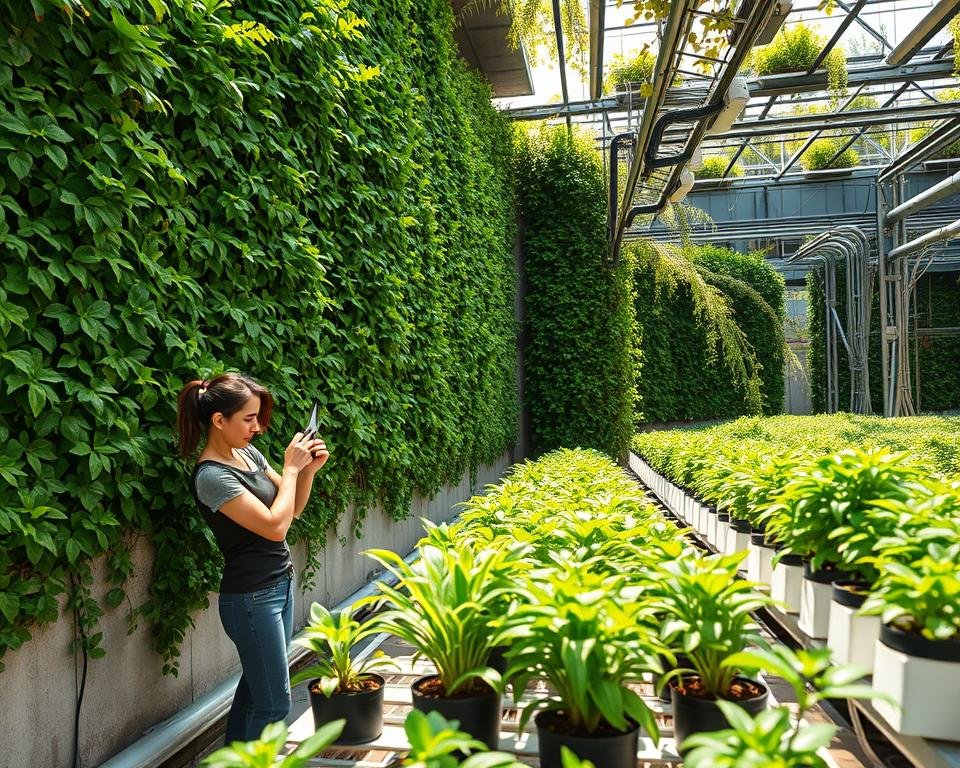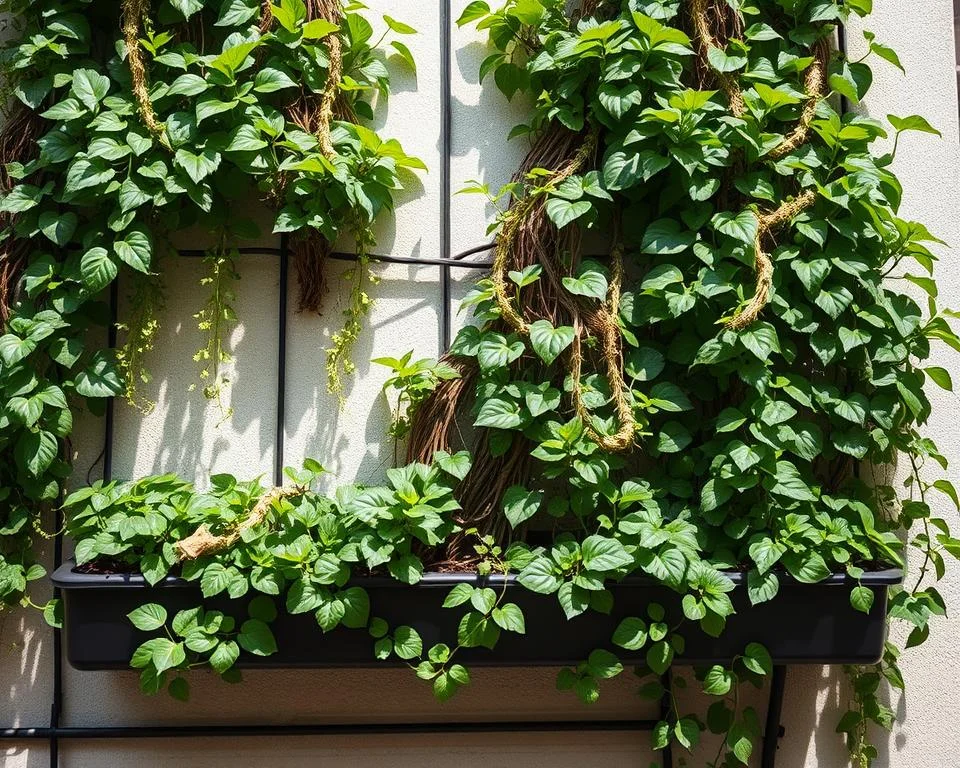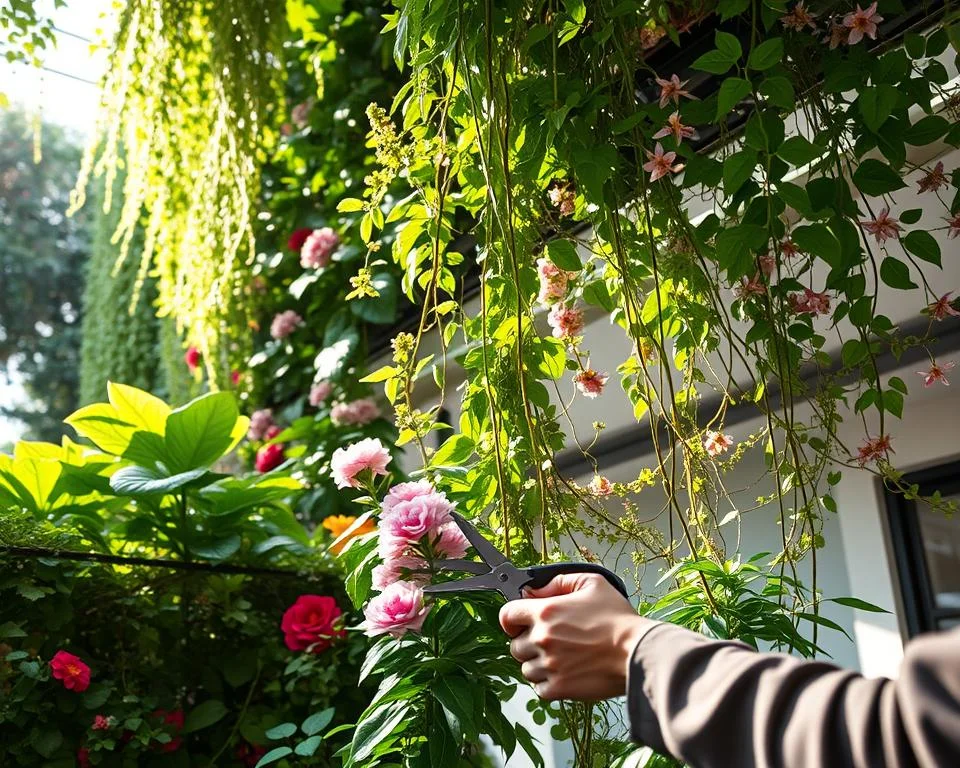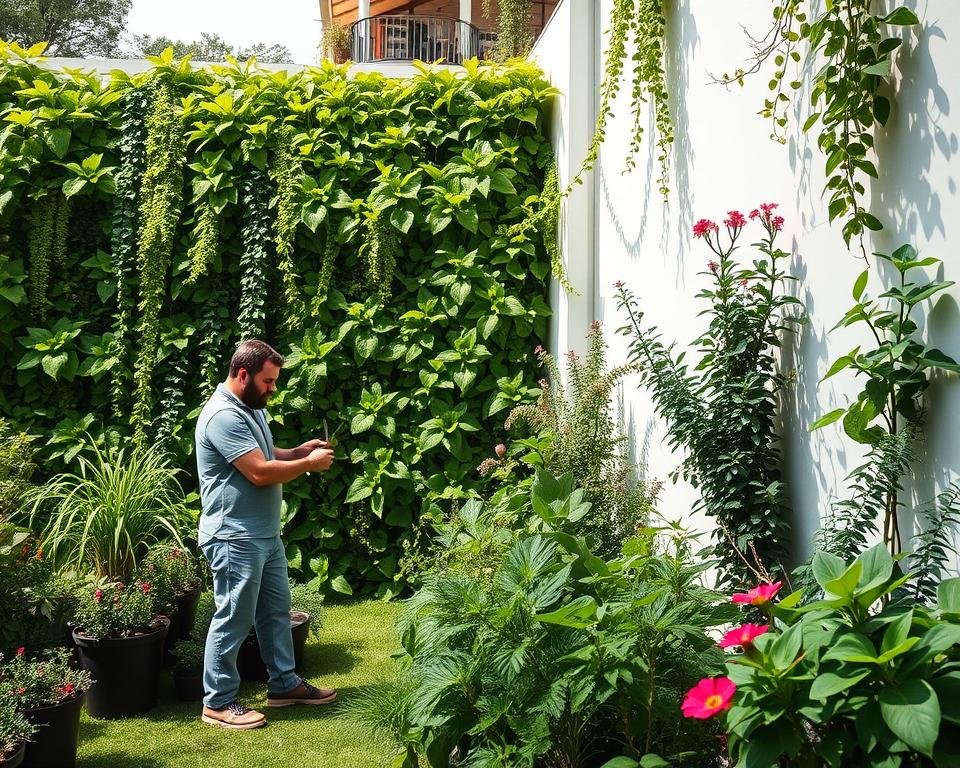Keeping Your Vertical Garden Clean: Maintenance Tips and Tricks
Imagine turning a blank wall into a lush, vibrant vertical-garden, it instantly brings life to your home. As an urban gardener, I’ve learned that success isn’t just about planting; it’s about using the right maintenance tips to keep your vertical garden thriving long-term.
Vertical gardening transforms how we grow in small spaces. These systems can save up to 80% of the space used in traditional gardens, making it possible to grow plants in places you never thought possible. Whether you live in a tiny apartment or have a small balcony, vertical gardens can turn any corner into a green sanctuary.
Knowing how to care for your vertical-garden is the key to keeping it healthy and beautiful. With the right maintenance tips, like smart watering, regular cleaning, and plant upkeep, you’ll keep your garden not only alive, but flourishing all year round.
Key Takeaways
- Vertical gardens optimize space and offer innovative gardening solutions
- Regular maintenance is critical for plant health and garden longevity
- Water conservation techniques can significantly improve garden efficiency
- Proper cleaning prevents disease and promotes robust plant growth
- Vertical gardens can transform small spaces into green, thriving environments
Essential Cleaning Tools and Equipment for Vertical Gardens
Keeping a vertical-garden in top shape needs careful planning and the right tools. It’s important to manage your tools well to keep your garden healthy and your equipment lasting longer. Choosing the right tools and taking care of them is key to your garden’s success.
Basic Cleaning Supplies Every Gardener Needs
Every vertical gardener should have a basic set of cleaning supplies. These tools help keep your garden clean and your plants healthy. Here’s a list of must-haves:
- Disinfectant spray or bleach solution
- Soft-bristled brushes
- Microfiber cloths
- Rubbing alcohol
- Protective gloves
Specialized Vertical Garden Tools
Vertical gardens need special tools that are different from those for ground gardens. Cleaning and taking care of these is key for your plants’ health.
| Tool | Usage Percentage | Maintenance Frequency |
|---|---|---|
| Pruning Shears | 85% | After each use |
| Soil Knife | 60% | Weekly |
| Loppers | 55% | Monthly |
Safety Equipment Requirements
Protecting yourself is just as important as protecting your plants. Invest in good safety gear to avoid injuries and keep your garden healthy. Safety should never be an afterthought in vertical gardening.
- Safety glasses
- Waterproof gardening gloves
- Non-slip shoes
- Respiratory mask for dusty conditions
Regular tool maintenance can extend your equipment’s lifespan by up to 50% and reduce plant disease spread by 30%.
Regular Maintenance Tips for Optimal Growth

To keep your vertical-garden healthy, you need to care for it regularly. It’s important to check on your garden often and take action early. This ensures your plants grow well and look great.
Effective vertical-garden maintenance includes several important steps:
- Weekly plant health assessments
- Monthly fertilization schedules
- Seasonal pruning strategies
- Comprehensive pest monitoring
Watering is key for vertical gardens. Each plant needs the right amount of water. Using a drip irrigation system can save up to 30% of water. It delivers water directly to the roots, saving resources.
| Maintenance Task | Frequency | Purpose |
|---|---|---|
| Pest Inspection | Weekly | Early detection and prevention |
| Fertilization | Monthly | Nutrient replenishment |
| Pruning | Seasonally | Plant health and shape |
Remember, consistent care is crucial for a thriving vertical-garden. By following these maintenance tips, you’ll create a space where plants can flourish and look beautiful.
Common Cleaning Challenges and Solutions
Vertical gardens are beautiful, but they have unique maintenance needs. Knowing how to tackle these issues will help your garden stay healthy and vibrant.

Addressing Mold and Mildew Issues
Moisture can lead to mold and mildew in vertical gardens. To avoid these problems, follow these steps:
- Ensure proper air circulation around plants
- Use fungicide treatments made for vertical gardens
- Keep an eye on humidity levels
- Remove any affected plant parts right away
Pest Management Strategies
Controlling pests is key to protecting your vertical-garden. Here are some strategies:
- Check plants weekly for pests
- Use natural predators like ladybugs
- Apply organic pest control
- Try companion planting
Water Drainage Problems
Good water management is vital to avoid root rot. Watch out for these signs:
| Drainage Issue | Potential Solution |
|---|---|
| Standing water | Improve drainage system |
| Soil compaction | Replace growing medium |
| Blocked drainage holes | Clean and unclog system |
Proactive maintenance can prevent most vertical-garden problems. Regular checks and quick action will keep your garden looking great.
Seasonal Maintenance Tips and Care Guidelines

Keeping your vertical-garden in top shape all year needs careful planning. Each season has its own set of challenges. Knowing how to handle these can make your garden flourish and stay healthy.
Spring is the best time to get your garden ready for the year. You’ll need to take a few important steps to help your plants grow well:
- Check your vertical-garden for any damage from winter
- Clean and sanitize the growing areas
- Update the soil and add nutrients
- Make sure your irrigation system is working right
Summer is when your plants need extra care to avoid heat stress. Many gardeners forget to do the necessary maintenance, which can harm their plants. Here are some tips to help:
- Water your plants more often
- Give them some shade when it’s really sunny
- Keep an eye on how dry or wet the soil is
- Use mulch to keep the soil moist
Fall is generally easier for vertical gardens that are permanent. But for those in containers, you’ll need to take a few steps:
- Trim back any plants that are perennials
- Get ready for cold weather
- Change how often you water
- Protect plants that are sensitive to cold
Winter needs special care to protect your plants. Up to half of the damage can be avoided with regular checks and early action. You might need to move your plants inside or cover them outside.
Conclusion
Your vertical garden journey doesn’t end with installation. Effective maintenance tips are key to making your green wall thrive. By following the strategies in this article, you’ll have a sustainable vertical garden that stays healthy and vibrant.
Regular care is more than keeping your garden looking good. It’s about creating a space where plants can grow well. The maintenance tips you’ve learned will help avoid pests, drainage issues, and plant stress. Your dedication to upkeep will keep your vertical garden a stunning part of your home.
Spending time on maintenance is worth it. You’ll learn more about plant care, see better plant growth, and have a dynamic living space. Remember, every garden is different. Stay alert, be patient, and keep learning from your plants.
Take on the challenges and joys of vertical gardening with confidence. With the right approach, your green wall will not just survive—it will thrive. It will bring beauty, fresh air, and a sense of pride from caring for a living garden in your home.







